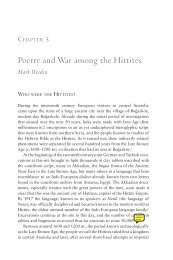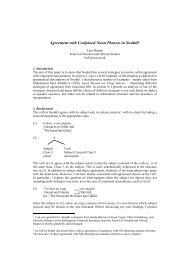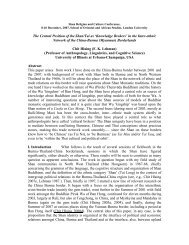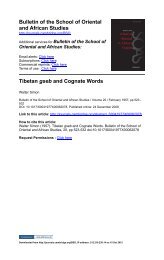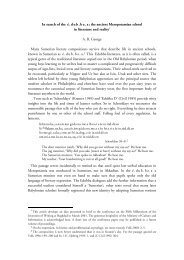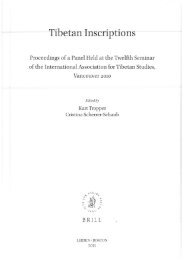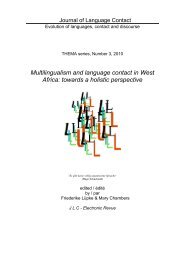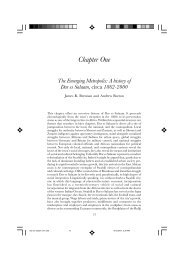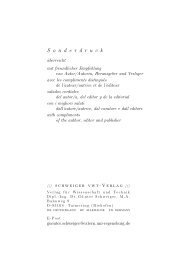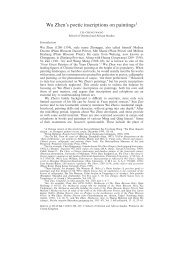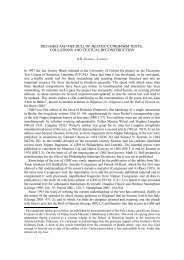Download
Download
Download
You also want an ePaper? Increase the reach of your titles
YUMPU automatically turns print PDFs into web optimized ePapers that Google loves.
and Kal"m. For the intermediate period I have no example. The modern period is represented with one<br />
example, no. 5, by Fida Husein Šam"m of Khapulu, who has published, apart from poetry on<br />
traditional topics, also a famous satirical poem criticising certain modern habits (Y" z"m"ni# tho#!<br />
‘Look at these times!’).<br />
The content of the Marsiyas<br />
As is well known, the genre of the Marsiyas is defined by its topic: they reflect the tragic events of<br />
the batle of Karbala in the month Mu$arram in 680, when %usein, the grandson of the prophet<br />
Mu$ammad, following an invitation from the inhabitants of Kufa, was confronted on his way, in the<br />
desert, with an overwhelming force sent by Yaz"d’s newly appointed governor of Kufa, Ibn Ziy!d. He<br />
demanded that %usein should surrender and acknowledge Muz‘!fiya’s son Yaz"d as caliph. %usein<br />
refused, which put him into the position of a rebel against the established power and justified, in their<br />
eyes, the scandalous treatment of the last grandson of the prophet. %usein was accompanied only by<br />
the members of his family, including women and children, and a small group of his faithful followers.<br />
There was no chance of a favourable outcome. In the afternoon of the 10th Mu$arram all his followers<br />
and his grown-up male family members, including himself, were killed in battle. Their bodies were left<br />
unburied, trampled on by the enemies’ horses; their heads were cut off and put upon spears, to be<br />
taken to Kufa on the second day after the battle, together with the women and surviving children, who<br />
had been the witnesses of the slaughter; later they were led to Damascus and presented to Yaz"d.<br />
The outrageous cruelty of these events has remained burningly vivid in the memory of the Shi!a<br />
community, who feel that they have to suffer themselves, in order to make up for the sufferings of the<br />
martyrs and to be worthy of them. In Baltistan this tradition has remained strong up to the present<br />
day: 3 every year during Mu$arram the martyrs are celebrated by processions and congregations, in<br />
which their cruel fate is lamented, and young men (like my informant S. M. Abbas Kazmi) are proud of<br />
the wounds they have inflicted on themselves by beating themselves and even cutting themselves with<br />
knives.<br />
In the Marsiyas published in this article the events of Karbala are presented from different angles:<br />
the most modern one, by Šam"m, narrates how the surviving family of Husein is led away from the<br />
place where their relatives were killed, whereas the second Marsiya of Mu$ibb and the two Marsiyas of<br />
Z!kir are put in the mouth of one of the women, %usein’s sister Zainab, with only one or two couplets<br />
introducing the speaker and her situation. The first poem of Muhibb introduces ‘Ali Akbar’s mother<br />
reporting his death to his sister, Husein!s daughter F!tima on her arrival in Damascus; and the last<br />
Marsiya, by ‘Mokhlis’, concentrates on Sakina, the two-year-old daughter of Husein, who died on the<br />
way to Damascus.<br />
3 cf. U. Sagaster 1989.



